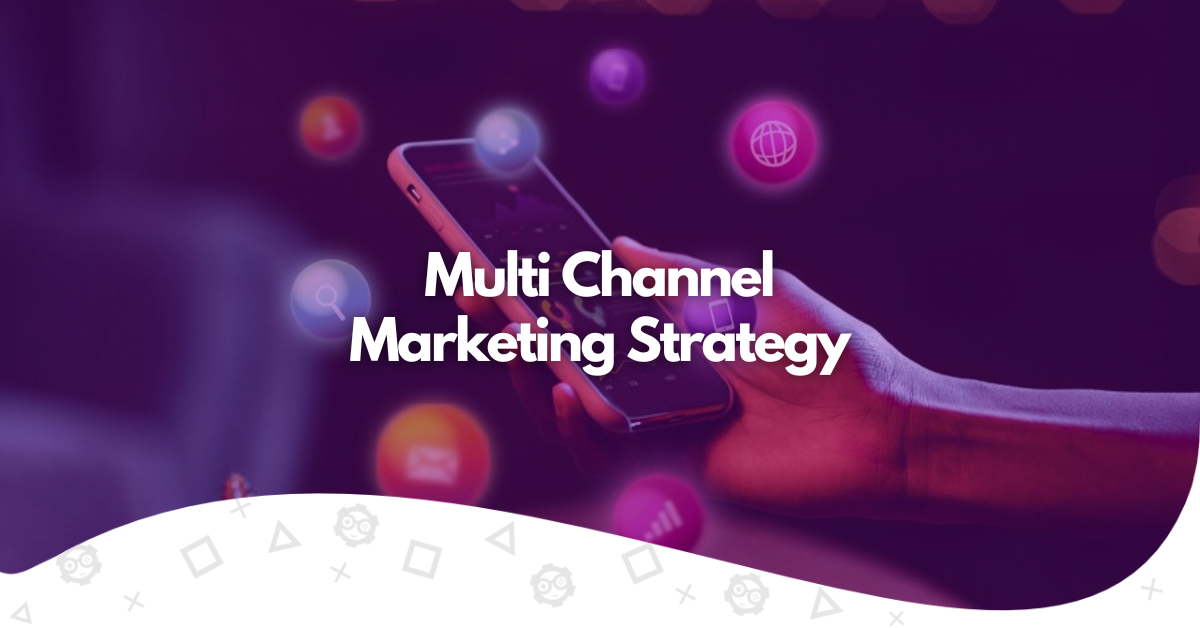In today’s digital age, several marketing strategies are evolving rapidly, and one approach taking the lead is multichannel marketing. This strategy empowers your business to engage with your target audience, ensuring a broad and impactful reach.
As we delve into this guide, we’ll explore the definition of multichannel marketing, its benefits, the challenges it presents, the different marketing channels you can use, and some inspiring success stories to illustrate its potential in driving startup growth and customer satisfaction.
- What is Multichannel Marketing?
- Multichannel Marketing Benefits
- Which Channels Work Well Together?
- Challenges of Multi-Channel Marketing
- Steps to Build a High-Performing Multichannel Marketing Strategy
- Multichannel Marketing Examples
- Multichannel Marketing Automation Software Tools
- Ready to Plan a Multichannel Marketing Strategy?
What is Multichannel Marketing?
Multichannel marketing is a strategy that enables every business type to interact with its customers through multiple channels, providing fruitful marketing opportunities to increase sales and user engagement. You can reach more customers and find where they spend most of their time by leveraging various communication methods.
There are several channels you can take advantage of to reach potential customers. They include:
- PPC and other online advertising.
- Retail storefronts.
- Website (including content marketing/blogging.)
- Email marketing.
- Direct mail.
- Mail-order catalogs.
- Social media.
- Mobile marketing.
- Influencer marketing.
- Live events (for the gaming industry).
The multichannel approach utilizes customer data to understand preferences and user behaviors, allowing for more personalized and targeted marketing efforts. You’ll also engage with your target audience across multiple platforms, ensuring a wider reach and the ability to connect with customers more meaningfully.
Multichannel Marketing Benefits
Multichannel marketing stands out as an exceptionally effective strategy for large and small businesses aiming to increase ROAS. Here are some key benefits:
- Enhanced Data Quality: A multichannel strategy provides qualified data, offering a comprehensive view of customer interactions. These insights help you make properly informed decisions and understand your client base’s nuanced needs and desires, far surpassing the limited data from traditional single-channel marketing.
- Refined Customer Profiles: This strategy allows the creation of detailed customer profiles, which is especially beneficial when targeting specific demographics such as married men aged 20-30 with Android smartphones.
More than implementing a user acquisition strategy for attracting new customers, with multichannel marketing, you’ll refine those new users and finally get quality traffic to your website, ensuring the proper audience visits your business pages and buys your products or services.
- Integrated Marketing Ecosystem: Multichannel marketing gathers data from multiple platforms and unifies it into one ecosystem, enhancing the data combination between different business branches. This integration ensures consistent and informed targeting across all channels, contributing to a cohesive strategy that provides no opportunity for engagement to be missed.
- Optimized Email Campaigns: Email marketing, a crucial component of multichannel strategies, benefits significantly from cross-channel data integration. You will create more targeted and effective email campaigns resonating with the audience’s needs and behaviors identified through the insights.
Which Channels Work Well Together?
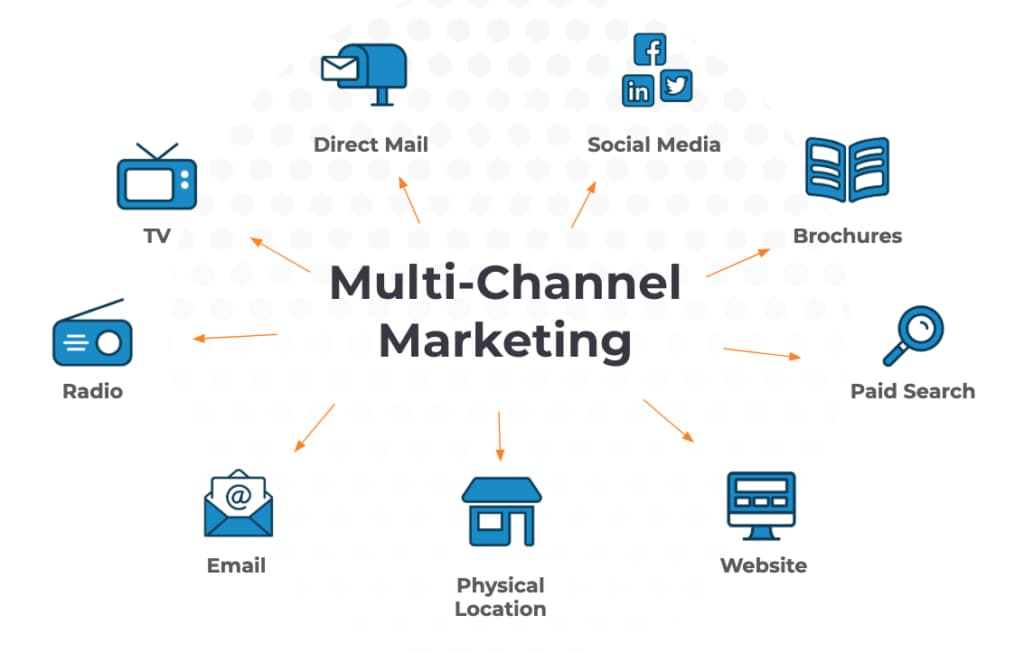
Certain combinations of advertising channels work more effectively to enhance customer engagement, especially among adults aged 18-64, based on the MediaPost report. The top multichannel marketing couplings that stand out for their compatibility include:
- Computer + Mobile Devices: this pairing, especially prominent during work hours (9 am – 5 pm), is a potent duo for reaching consumers across digital channels.
- Television + Mobile Devices: Gaining prominence in the evening (5 pm – 11 pm), this combination leverages the common habit of simultaneous TV and mobile device usage, enhancing the potential for engagement through traditional and digital channels.
- Computer + Television: This pairing also highlights the blend of traditional and digital channels.
- Radio + Mobile Device: this integration taps into the audience’s on-the-go lifestyle, allowing for a continuous engagement loop.
- Computer + Radio: Similar to radio and mobile, this combination connects traditional listeners with digital content consumers.
Incorporating social media channels into these pairings can further amplify customer engagement, as social media platforms offer personalized content delivery and interactive experiences mostly on mobile devices, making them a vital component of an effective multichannel strategy.
Challenges of Multi-Channel Marketing
While the multichannel approach in marketing offers many benefits, especially in the gaming industry, it also provides challenges that can’t be overlooked. One of the first challenges is managing the budget, primarily for smaller businesses. Setting multiple campaigns across various channels can increase costs.
Another challenge comes with assessing the effectiveness of multichannel campaigns. This involves intricate tracking and control of the outcomes across diverse channels, which can be complex and time-consuming.
Moreover, ensuring a consistent customer experience across all these platforms is crucial yet challenging, and the necessity for multichannel support complicates the execution of a seamless marketing strategy.
The demand for a coherent brand image and message across all platforms is essential for fostering customer satisfaction and loyalty, yet achieving this consistency demands meticulous planning and coordination.
Steps to Build a High-Performing Multichannel Marketing Strategy
To elevate your marketing efforts through a multichannel approach, follow these steps to build a strategy that hits the mark.
Step 1: Define Your Goals
Start by setting clear and specific objectives and key performance indicators (KPIs) that reflect your business aims. This ensures your marketing efforts across various channels are strategic, measurable, and aligned with your overarching business goals.
Step 2: Understand Your Audience

Conduct in-depth research to comprehend your target audience’s preferences, challenges, and habits across different platforms. Tailoring your strategy to meet the customer needs enhances engagement and nurtures lasting relationships.
For example, Netflix discovered that millions of its subscribers like to watch anime, so understanding this and its audience, it incorporated 40 new anime titles to engage more users and increase its user base.
Step 3: Select Appropriate Channels
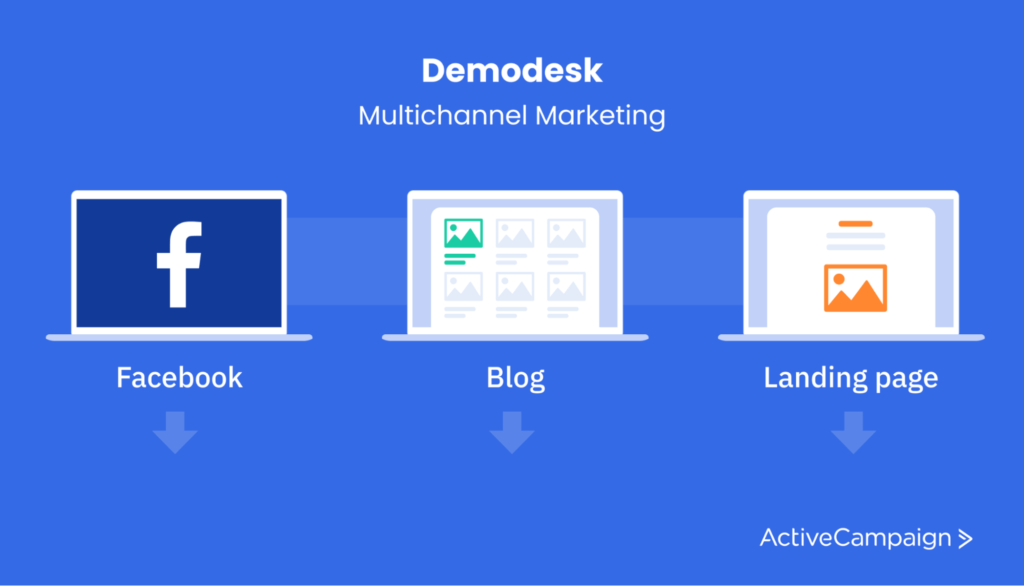
Choose the marketing channels that best suit your audience’s preferences and marketing objectives. This might include social media, email, SEO, content marketing, and paid ads. The ultimate goal is to meet your audience where they are most active and engaged.
The meeting platform Demodesk built a multi-channel campaign across organic channels. Since they’re constantly compared to other meeting platforms, their content demonstrates why Demodesk is superior, engaging first through Facebook ads, adding calls to action that redirect the audience to a landing page with information about their product, and leading them again to try the platform with a Free demo, finally completing a sale.
Step 4: Leverage Marketing Automation and Data Integration
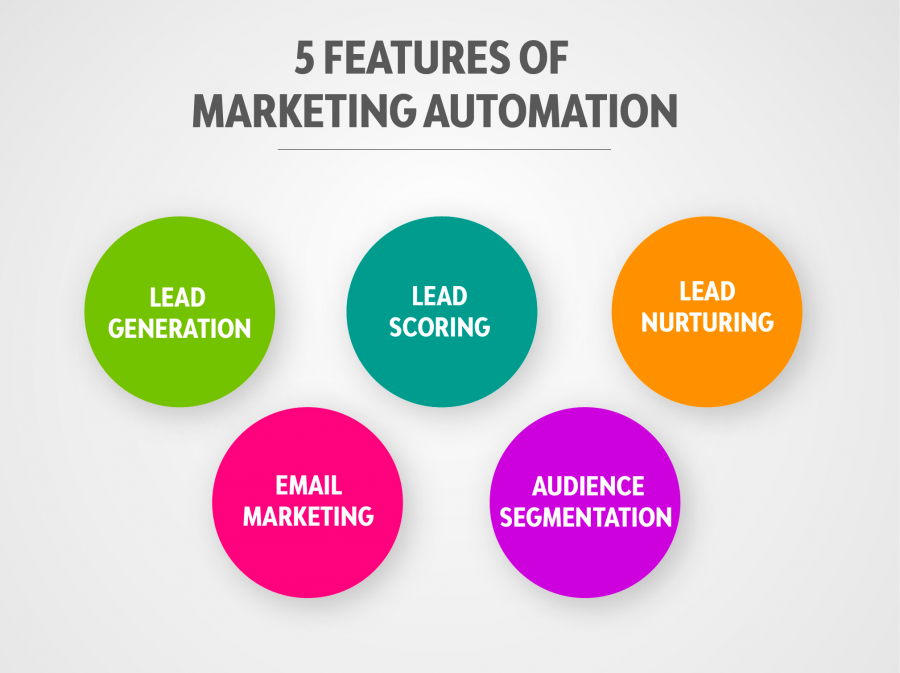
Utilize marketing automation tools to streamline the management of customer data and behaviors across multiple channels. These systems facilitate the analysis and integration of data, making it easier to understand customer interactions and refine your strategy. They are also designed to handle repetitive tasks efficiently, giving you more time to focus on planning and managing their campaigns.
Some of the automation tools you can try are Campaigner, HubSpot, and Marketo. Still, we’ll delve deeper into this later in this article, where you’ll discover their price and features and how they’ll help you with your multichannel campaign.
Step 5: Craft a Detailed Strategy
Create a plan that outlines how you will use each chosen channel to support your goals. Ensure your message is consistent across platforms to reinforce your brand’s voice and identity and build trust in your business.
Step 6: Create Engaging Content

Engaging content is always necessary for successful results when marketing mobile games, video games, or other products online. The content must be tailored to each channel’s format and the audience’s preferences.
You can include various content types, like video, images, and interactive elements, to encourage organic sharing and keep your audience engaged.
For example, Starbucks engages with its audience primarily on social media, using Facebook, Instagram, and TikTok as its primary channels. Their posts match the season’s menu and the formats for every platform (vertical for reels and TikTok videos and square for Instagram posts and ads.) They enhance their content by creating a sense of community, showing real people testing their products and collaborating with celebrities. They know how to create engaging content through social proof and mixing daily post types.
Step 7: Execute, Monitor, and Adapt
Launch your campaigns across the selected channels and closely monitor their performance. Use analytics tools to track key metrics, allowing you to assess the effectiveness of your content marketing and other tactics. Keep adjusting your strategy based on customer behavior and data insights to optimize outcomes and achieve better results.
Multichannel Marketing Examples
Dive into these inspiring marketing success stories that show how combining multiple channels can create personalized customer experiences and amplify marketing activities.
1. Epic Games – Fortnite

A standout campaign with a multichannel marketing strategy is behind “Fortnite,” a game developed by Epic Games.
To catapult Fortnite into the gaming world, they employed an ingenious multichannel strategy that included using social media, engaging with influencer marketing through collaborations with celebrities and high-profile streamers, and creating immersive experiences with live in-game events and concerts.
This diverse approach showcased the game’s dynamic gameplay across different channels (including computer and mobile devices) and fostered a sense of community and excitement.
The result was phenomenal, with “Fortnite” amassing a huge player base of over 350 million, creating its legacy as one of the most iconic games in history.
2. Apple
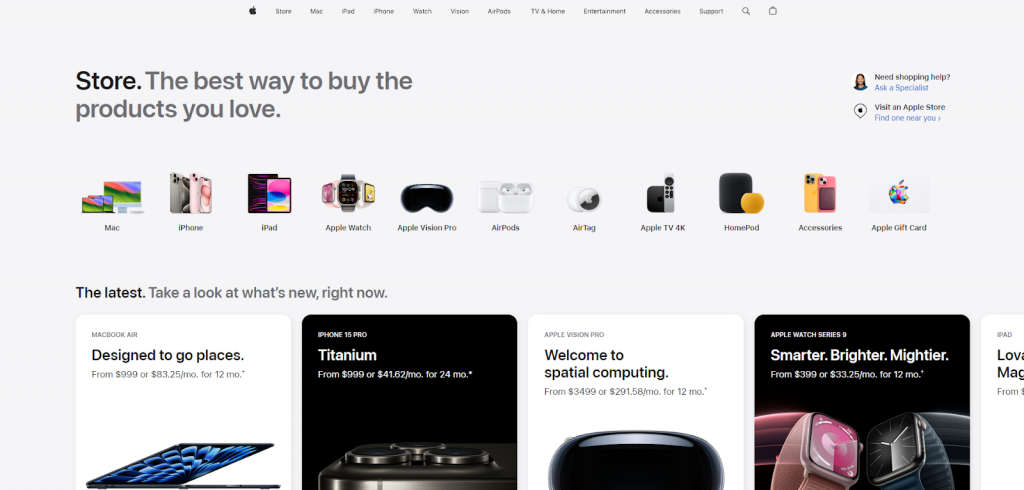
In response to evolving buyer behaviors and recognizing that a significant portion of its consumer device sales originated from its online platforms, Apple ingeniously redefined its physical store experience.
The Apple website and mobile app are great for buying their products, so the in-store experience has been elevated to focus on interactive product demonstrations, educational sessions, and comprehensive technical support.
These strategic transformations enable customers to immerse themselves in the Apple ecosystem physically, offering a tactile engagement with the products that online platforms can’t replicate.
Apple’s mastery in creating a cohesive visual and messaging strategy across all channels further enhances the customer experience. Its content is instantly recognizable, ensuring a consistent and familiar brand presence that effectively engages customers regardless of the medium – be it a television commercial, social media, official website, mobile app, or store environment.
3. Activision – Call of Duty

The launch of “Call of Duty: Warzone” is another great example of how a multichannel marketing strategy can effectively drive sales and engage a broad audience.
Activision created a campaign that skillfully utilized popular channels like social media platforms (Facebook, TikTok, Instagram, and X) and influencer marketing. They also collaborated with Amazon Prime to engage with Prime Video users and offer unique rewards.
Likewise, they reached out to their existing fan base through personalized email campaigns, targeting gamers who had interacted with or expressed interest in the “Call of Duty” series.
This approach not only heightened anticipation but also played a huge role in making “Call of Duty: Warzone” one of the standout games in 2020, attracting over 75 million registered players.
Multichannel Marketing Automation Software Tools
Marketing Automation tools have emerged as indispensable allies for all types of businesses, especially when creating a multichannel strategy. They represent a worthwhile investment if you want to make data-driven decisions and optimize your marketing efforts. Let’s delve into some automation tools you can use to help you with your multichannel marketing strategy.
Campaigner
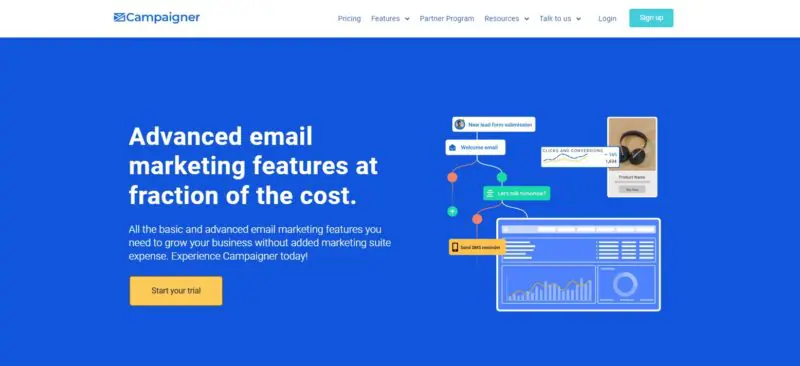
- Price: Starts at $59/month.
Campaigner stands out as a robust email marketing and multichannel marketing automation platform catering to the dynamic needs of modern businesses.
The features include comprehensive lead scoring, automated workflows, insight analytics, and advanced email marketing automation, allowing you to design and execute email campaigns efficiently.
This tool extends its capabilities to encompass multi-channel marketing automation and facilitates the creation of audience segmentation and the deployment of user behaviors to create personalized messaging across emails, social media, SMS, and more.
HubSpot
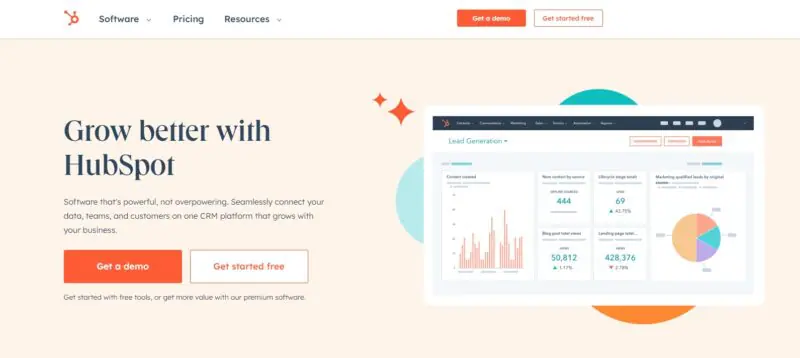
- Price: Starts at $18/month.
HubSpot is a marketing suite designed to cater to various aspects of digital marketing, from email campaigns and social media management to CRM. It will help you craft personalized messaging and streamline marketing tasks across multiple channels.
Its better feature is its robust email marketing functionality, which empowers businesses to design, dispatch, and monitor personalized email campaigns.
With audience segmentation and performance tracking capabilities, it also facilitates lead scoring and nurturing, helping your business identity and engage with potential high-value customers.
Moreover, Hubspot’s CRM system is great for managing customer preferences, interactions, and data. Seamlessly integrated with HubSpot’s marketing automation tools, businesses can tailor their communication and marketing efforts based on valuable insights.
Marketo
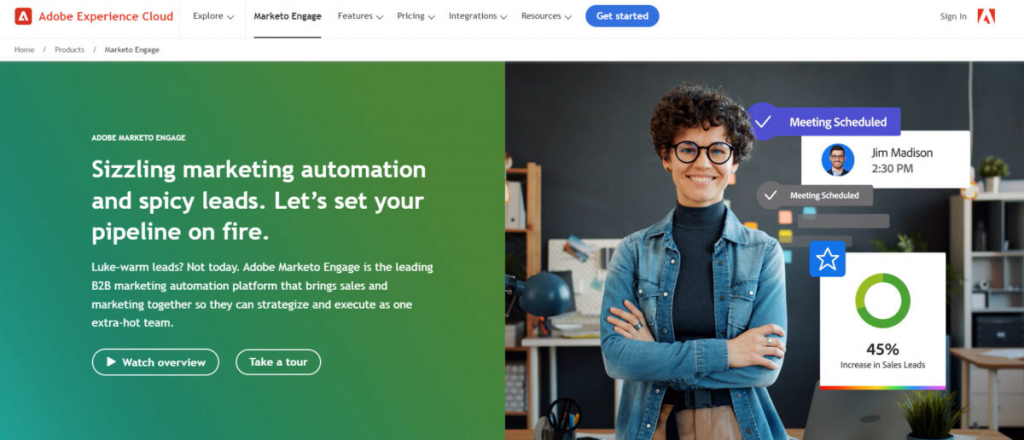
- Price: Custom quote.
Marketo emerges as a leading marketing automation solution, particularly suited for B2B companies. It boasts a wide range of features aimed at refining lead generation and management processes, with its advanced lead management and scoring system standing out for its ability to pinpoint and prioritize leads, thus directing sales efforts toward the most promising prospects.
Beyond lead management, Marketo extends its capabilities to include email marketing and social media management, coupled with extensive analytics and reporting tools.
Ready to Plan a Multichannel Marketing Strategy?
Multichannel marketing is now a must-have strategy for businesses across the world. By leveraging various channels to connect with customers, you can significantly boost your visibility, engagement, and the accuracy of your targeting efforts.
Sure, navigating the multi-channel landscape comes with its share of challenges, like sticking to a budget and figuring out which strategies are hitting the mark. But we can help you address these challenges and plan your startup marketing strategy, so don’t hesitate to contact us at GamerSEO.
As the gaming industry keeps advancing, the role of multichannel marketing is set to become even more pivotal in achieving success.

Maciej is a content manager with five years of professional experience. While his heart beats for viral marketing campaigns and creative storytelling, he’s equally at home delving into data to craft compelling content. Off the clock, you’ll find him immersed in old-school RPGs or doing various sports activities

